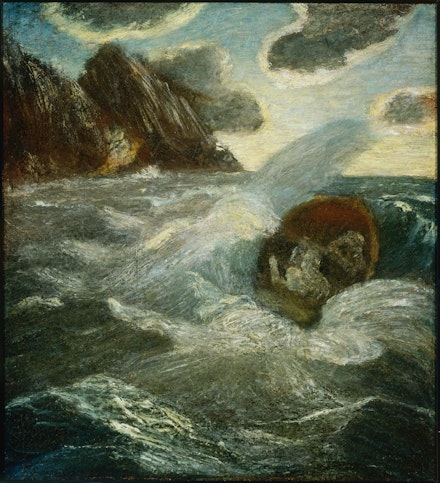Numerous masterpieces have been influenced by the sea’s fluctuating mood, the magnificent sails billowing in the wind, and the enticement of far-off coasts. Come along with us as we take you on a visual tour through ten historical paintings that exquisitely capture the enduring allure of the sea and ships.
Cumhuriyet Vapuru by Tahsin Siret Bey, 1926
Tahsin Siret Bey is one of the most important sea lovers in Turkish art history.
Tahsin Bey, who studied pencil and watercolour at Diyarbakır Rüştiyesi, later continued his mastery of painting in Istanbul. After coming to Istanbul, the painter, known as “Tahsin from Diyarbakır” at Harbiye, became a student of Hodja Ali Rıza. During the lessons he took from Hodja Ali Rıza, he mostly focused on marine paintings.
In 1902 he attended Osman Hamdi Bey’s painting studio at the palace. During the First World War, when he was a major, he fell ill and was sent to Budapest for treatment. He returned from there married and retired. He taught at a Jewish school for a while. The artist, who liked to paint mostly naval and warships, died in Kadıköy in 1937. The artist’s works, who was also a strong tanbur player, are in the Naval Museum, the collection of İş Bankası and private collections.
Saintes-Maries-de-la-Mer by Vincent Van Gogh, 1888
Van Gogh, one of the most famous figures in art history, was among those influenced by the magic of the sea.
In June 1888, Vincent van Gogh painted a sequence of scenes featuring the French village of Saintes-Maries-de-la-Mer. During his week-long visit, Van Gogh painted the town and its surrounding seascape many times.
Van Gogh’s “Boats at Saintes-Maries” is an example of his obsession with the lively hues and dramatic compositions that the seaside environment has to offer. The essence of marine life in the South of France is captured by the vibrant palette and strong brushstrokes.
The Fighting Temeraire by J. M. W. Turner, 1839
Joseph Mallord William Turner sometimes referred to as J.M.W. Turner, is a highly esteemed artist who is especially well-known for his unmatched ability to capture the spirit of marine settings. Turner’s creative journey began in 1775 when he was born in London, and it took place against the backdrop of a society that was changing quickly due to industrialization and scientific advances.
Turner’s marine paintings brilliantly capture his passion for the sea and ships. He expertly controlled the interaction of light, color, and mood to produce compositions that were both striking and moving.
Turner’s masterwork, “The Fighting Temeraire,” is a moving depiction of a time in history. A tugboat driven by steam propels the seasoned cruiser HMS Temeraire to its last berth, signifying the change from sail to steam power.
The Raft of the Medusa by Théodore Géricault, 1818-19
A young guy shot through the streets of Paris in 1819. He claimed years later that he must have appeared insane as he ran the entire distance home. Eugène Delacroix was the painter, and he had just entered Théodore Géricault’s studio to view the incredible work, Raft of the Medusa. While the painting is a familiar sight to visitors to the Louvre today, when it was created in 1819 it was a very avant-garde piece of art that astounded the whole world.
The Raft of the Medusa tragedy came to represent the persecution meted out to the most defenceless and vulnerable people. Following Napoleon’s defeat in 1815, they were the years of the Bourbon Restoration, and the episode greatly embarrassed the French monarchy in the eyes of the people.
The Ninth Wave by Hovhannes Aivazovsky, 1850
Most people’s first exposure to Aivazovsky’s work is likely The Ninth Wave. It was one of the first paintings added to the Emperor Alexander III Russian Museum’s collection in 1897, having originally been purchased for the Imperial Hermitage.
The ninth wave, which is said to be the most horrible, strong, and destructive wave in history, is almost upon us. However, hope’s light breaks through the night’s gloom. A few individuals cling to the ship’s mast debris, which appears to be a more dependable haven at daybreak than it was at night.
The wild water will be conquered by the frantic endeavours to survive. Naturally, there was also an allegorical interpretation of the Ninth Wave. For several generations, the picture took on symbolic significance, inspiring belief in the triumph of life, humanity, and man.
Christ in the Storm on the Sea of Galilee by Rembrandt van Rijn, 1633
It was created in 1633, not long after Rembrandt relocated from his hometown of Leiden to Amsterdam, where he was quickly making a name for himself as the city’s most prominent portrait and historical subject painter. Rembrandt’s early technique is typified by the scene’s meticulous representation, the characters’ range of expressions, the reasonably polished brushwork, and the vibrant colors.
The biblical scenario pits the physical and spiritual weakness of humans against the natural world. A massive wave breaks over the fishing boat’s bow, shredding the sail and bringing the vessel dangerously near to the rocks in the left foreground, as the terrified disciples battle against an unexpected storm. One of the disciples throws up over the edge, giving up to the wrath of the water. Only Christ, on the right, maintains his composure in the middle of all of this chaos—like the storm’s eye.
Breezing Up (A Fair Wind)” by Winslow Homer, 1873-76
The dynamic energy of a sailing journey is captured in Winslow Homer’s “Breezing Up”. A family is shown in the artwork sailing the wide sea with excitement, soaring sails, and an adventurous spirit that perfectly captures the essence of maritime exploration.
Homer wrote about everything from the horrors of the battlefield to the opulence of living at a beach resort in the early 1860s. Homer took up painting outside views, a looser brush style, and a warmer palette after travelling extensively around Europe in 1866–1867. These changes were mostly influenced by modern French painters like Courbet, Manet, and Monet.
Homer painted warm, inviting pictures of sports and pleasure after returning to the United States. These scenes wonderfully matched the postwar longing for a simpler, more innocent America that was all the rage at the time. One of the most well-known and cherished visual representations of 19th-century American life is Breezing Up (A Fair Wind), which was painted during the USA’s centennial year.
Whalers by Albert Pinkham Ryder, 1885
American painter Albert Pinkham Ryder finished “Whalers” sometime in the 1880s. The impact of Ryder on other painters, such as Jackson Pollock, has been the focus of research and appreciation. His work is distinguished by its exceptional skill and ongoing influence on modern artists, even after he passed away more than a century ago. Although Ryder’s distinctive creative style and impact on American art are widely known, the work “Whalers” is not mentioned in the materials that are now available.
Battle of Trafalgar by William Clarkson Stanfield, 1836
The Battle of Trafalgar, which took place off the coast of Spain on October 21, 1805, is seen in the artwork. During the Napoleonic Wars, a British fleet under the command of Admiral Lord Nelson decisively defeated the combined French and Spanish forces in a pivotal naval conflict.
The fight is uniquely portrayed in Stanfield’s picture—it is seen from the lee rather than the weather side of the British fleet. The “Victory” is located in the middle right of the picture, beside the “Redoutable” and “Téméraire” and a port-bow perspective. The “Caesar” is seen raking the “Fougueux” from astern. The artwork is a replica of Stanfield’s original creation, created around three decades following the incident.

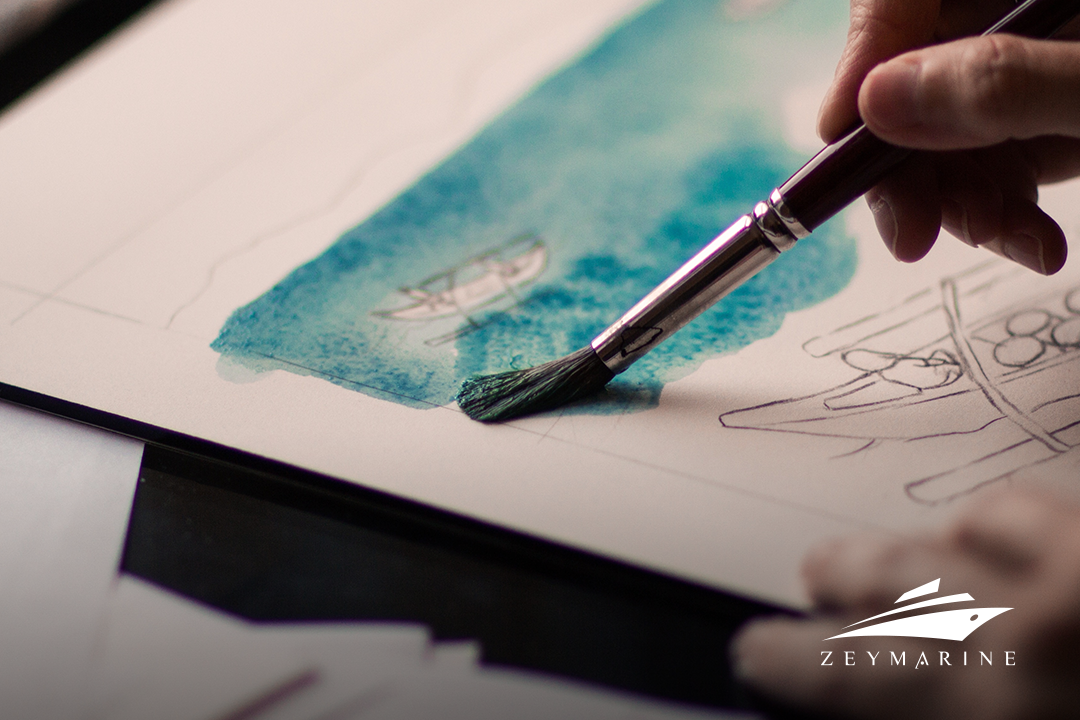
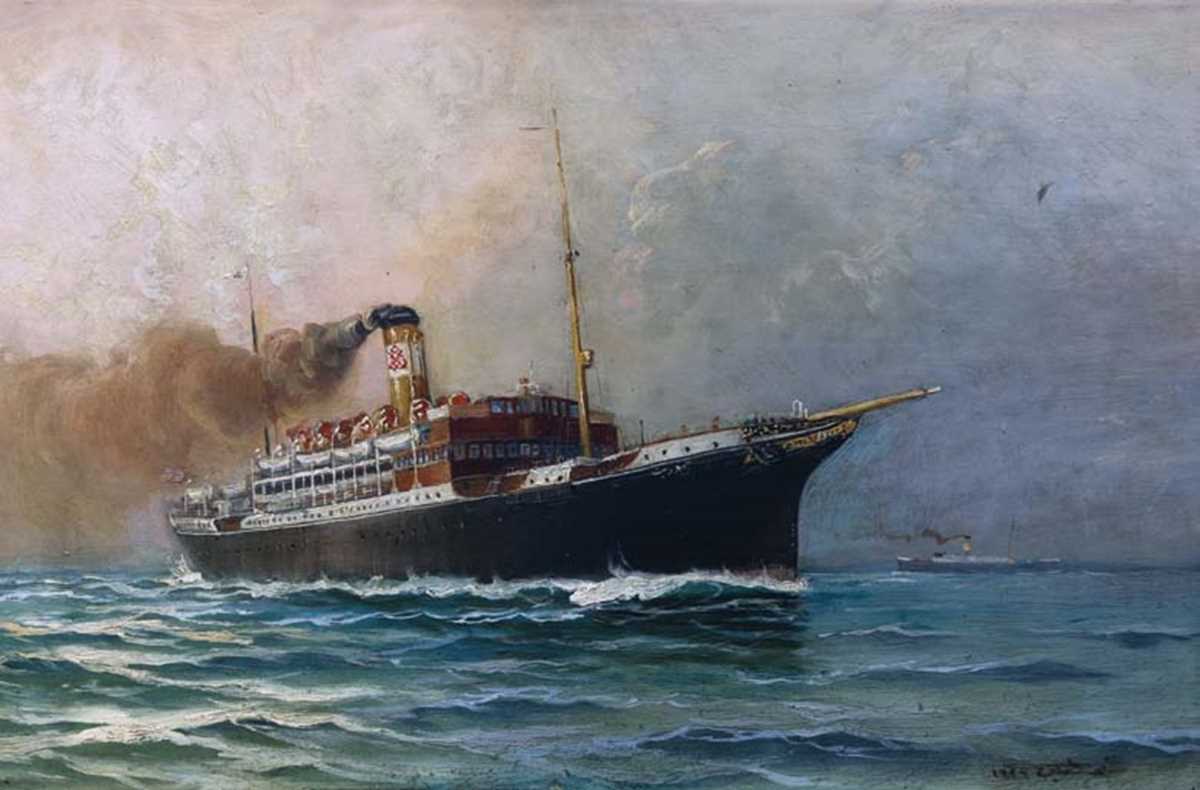

.jpg)
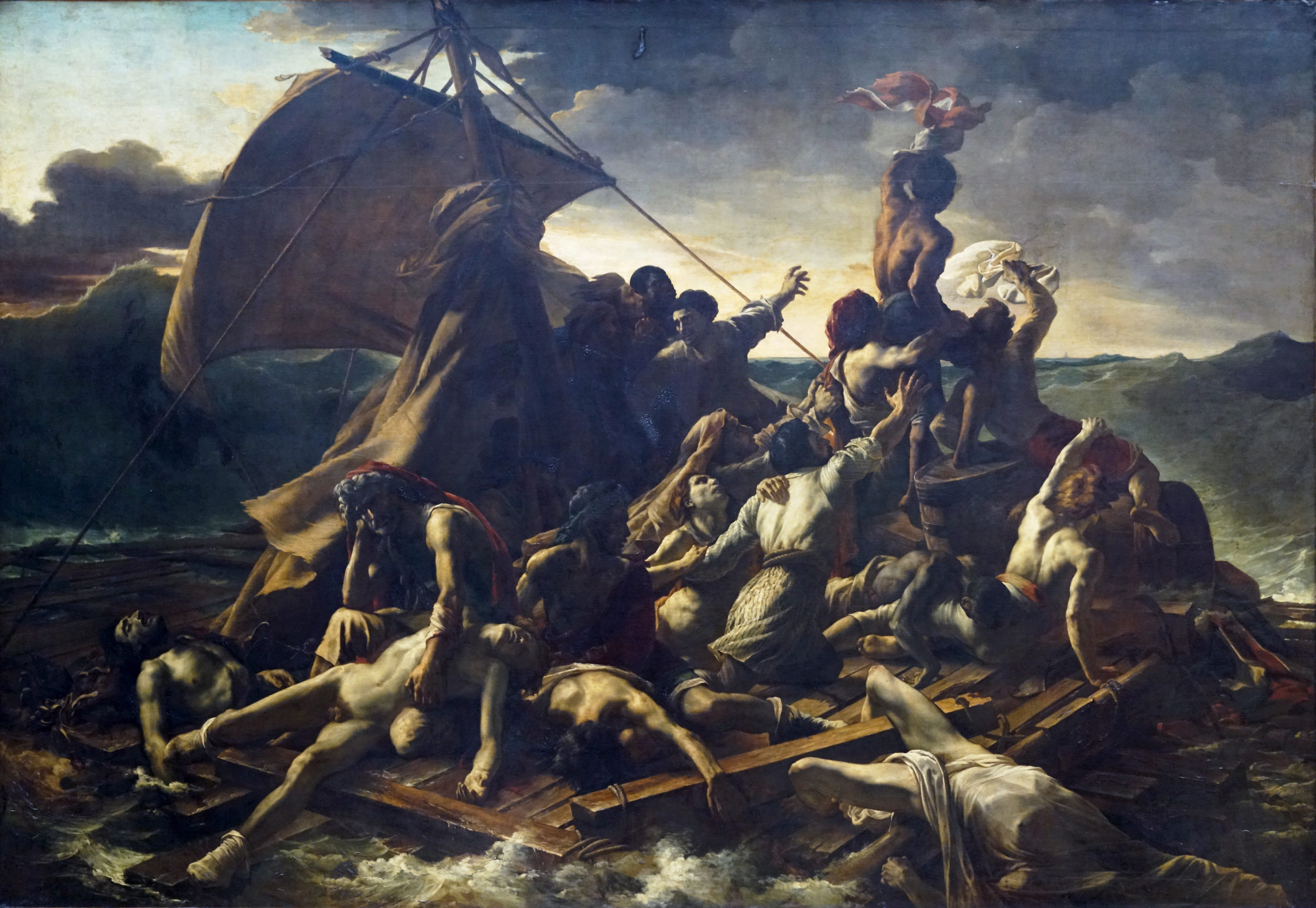

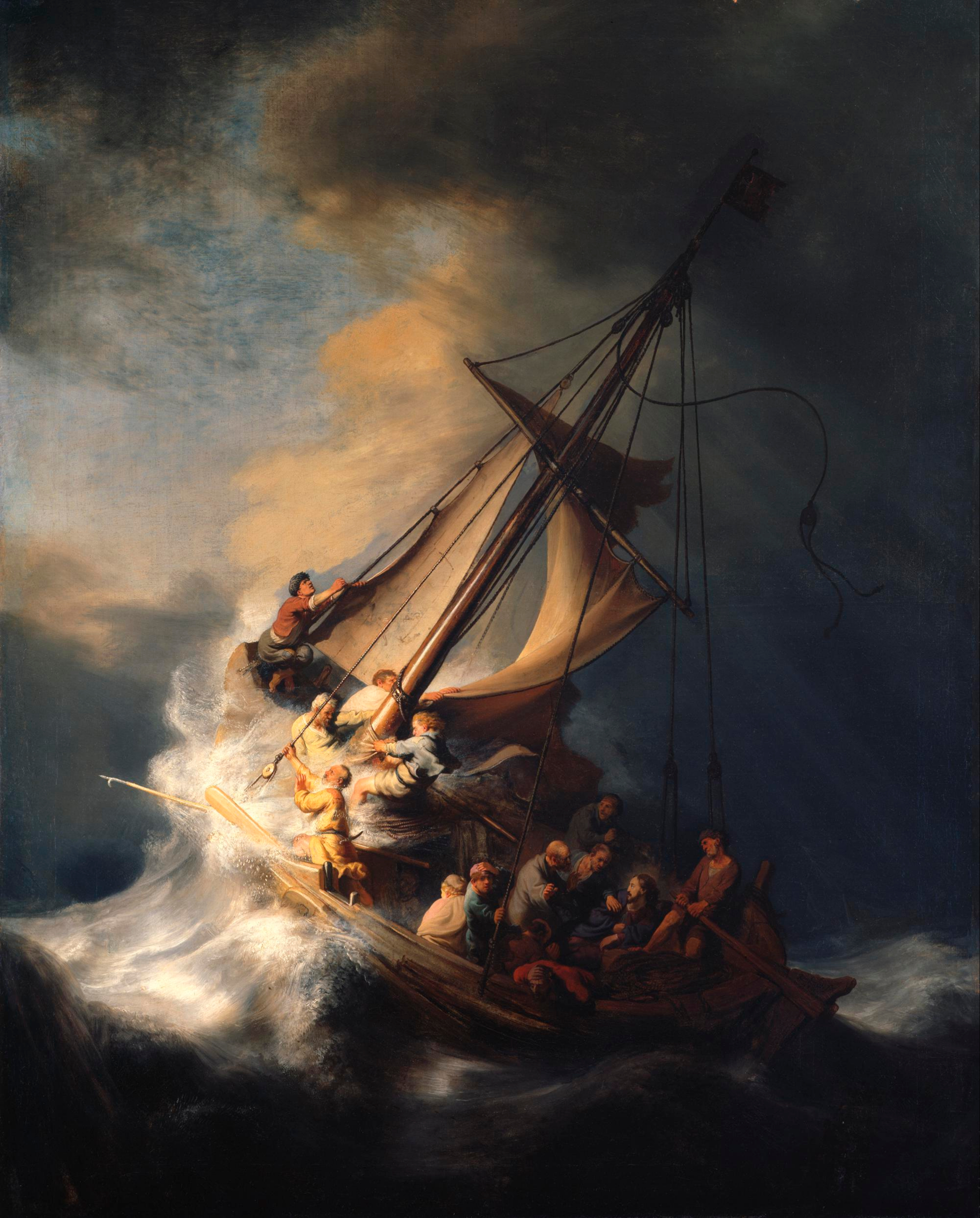
.jpg)
